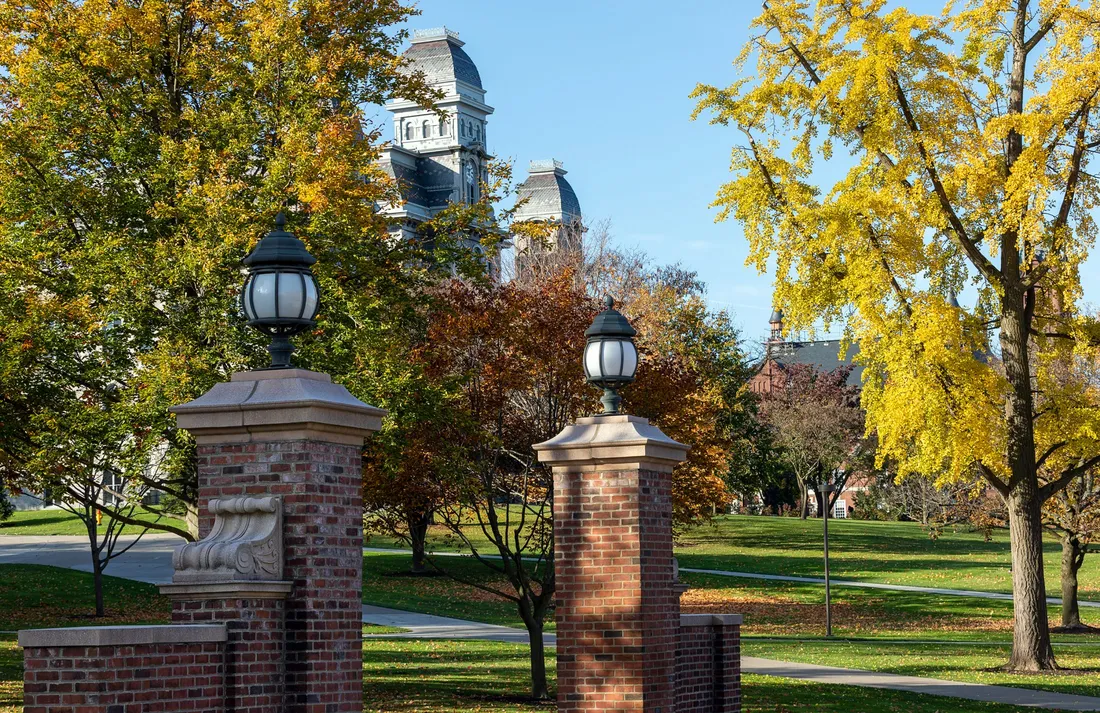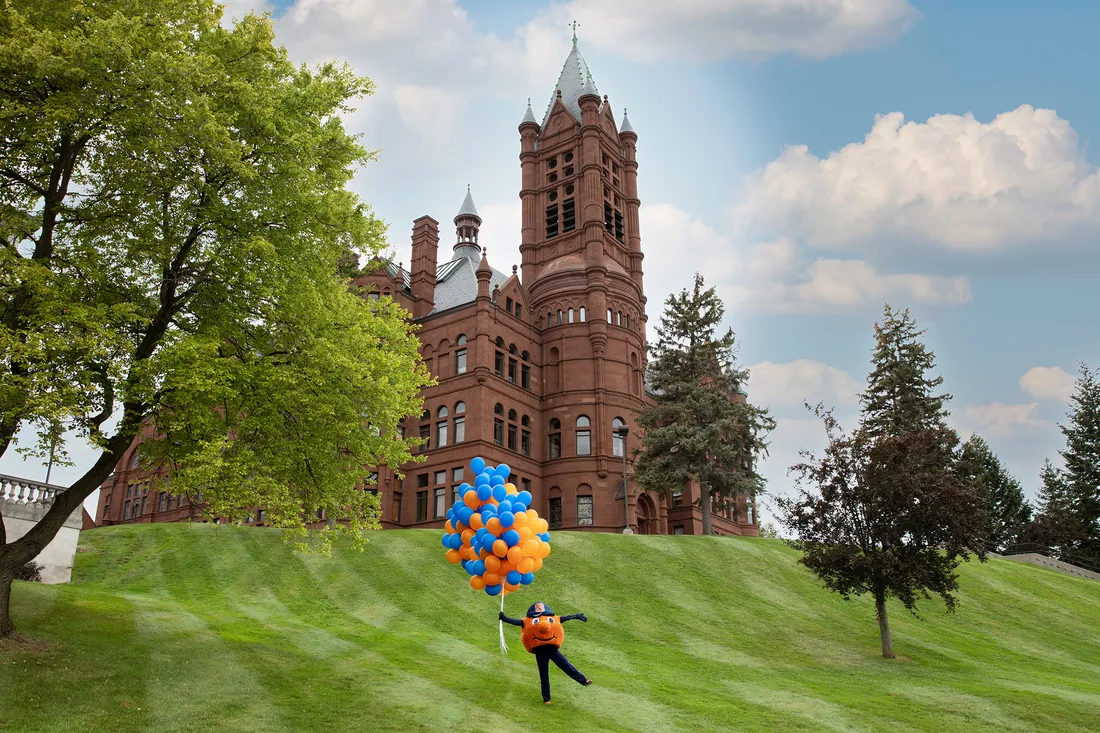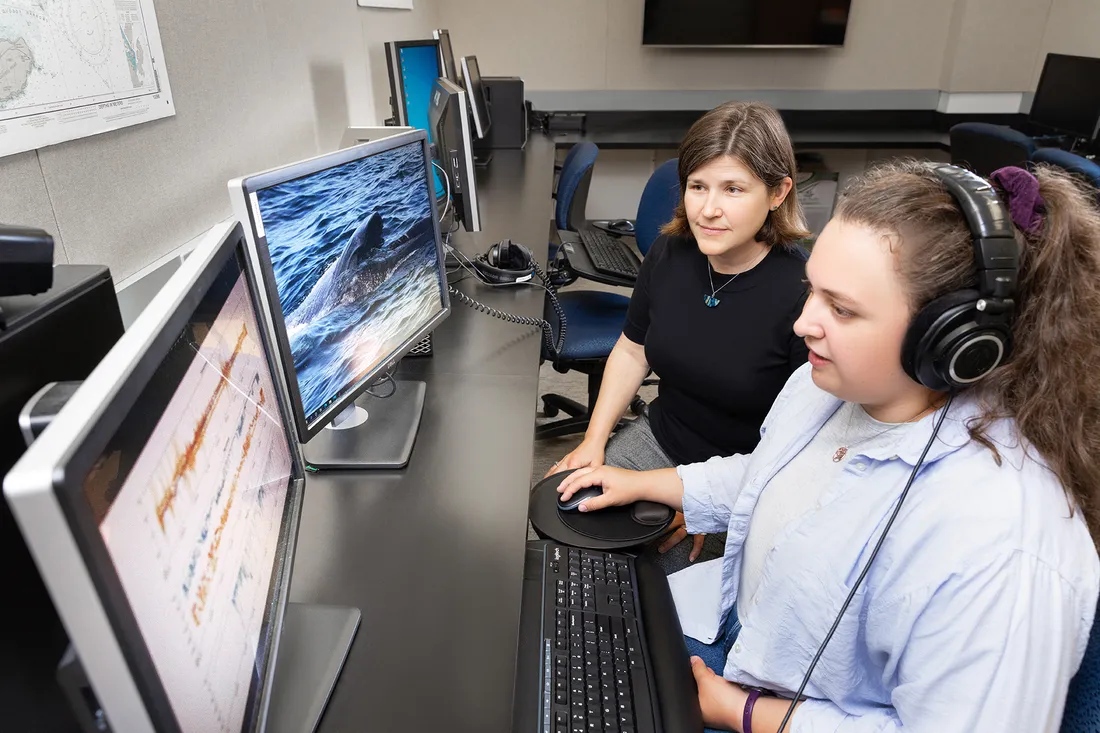
Susan Parks, left, founder of the Bioacoustics and Behavioral Ecology lab, studies marine mammals—including North Atlantic right whales—to support conservation efforts. Students in Parks’ lab research the acoustic signaling and the effects of human generated noise on a wide range of species.
For many species living in environments with low visibility—such as the ocean—communicating by sound is crucial for survival. And, for the scientists who study these species, interpreting the sounds they make is one of the only options available for gaining insight into their behavior.
Animal acoustic signaling has been central to behavioral ecologist Susan Parks’ work for decades. Known for her research on North Atlantic right whales, Parks is founder of the Bioacoustics and Behavioral Ecology Lab in Syracuse University’s College of Arts and Sciences and has been at the forefront of many efforts to better understand a range of marine mammals and other species, as well as general properties of acoustic signaling and the effects of human-generated noise on animal behavior and health.
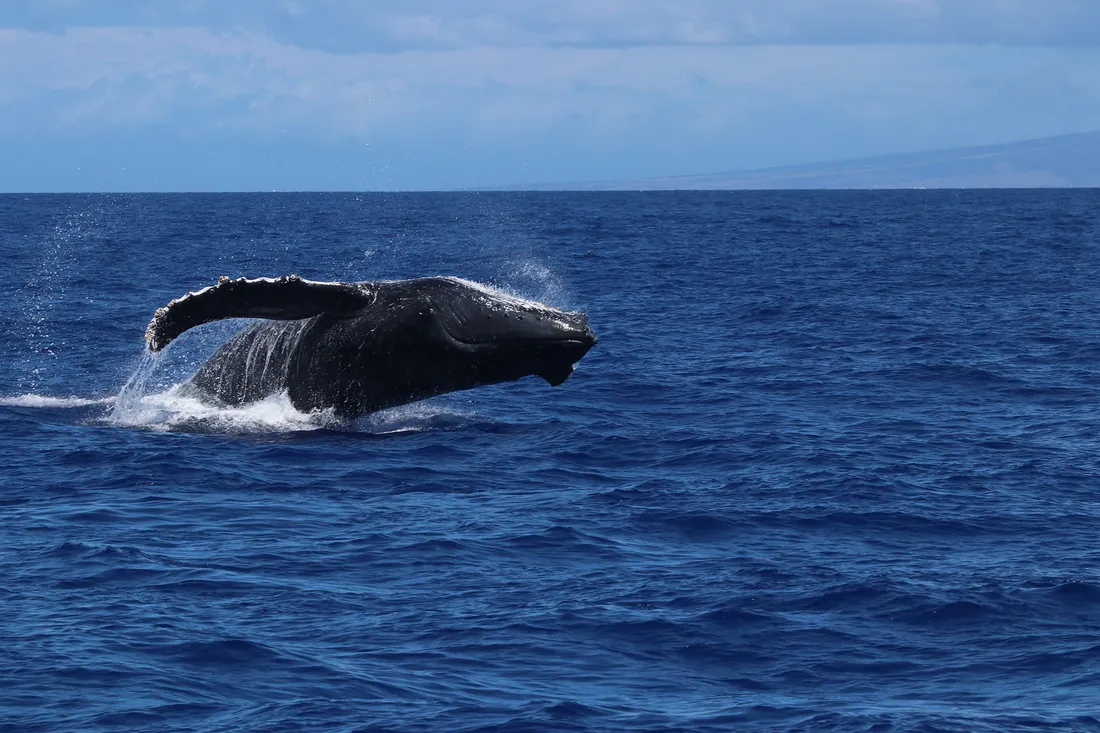
Acoustic data can be gathered with minimal disturbance to animals and ecosystems. “As behavioral ecologists, we want to observe not only where animals go, but also what they’re doing there and why, without our presence being an influencing factor,” Parks says.
(Photo by Susan Parks, collected under NOAA Permit 19655, held by Dr. Adam A. Pack. Collaborators include Dr. Marc Lammers of the Hawaiian Islands Humpback Whale National Marine Sanctuary and Dr. Adam A. Pack of University of Hawaii at Hilo and The Dolphin Institute)
The Connection Between Acoustics and Whale Conservation
Right whales are an ancient species of baleen whales—toothless whales that feed by straining small organisms like krill and plankton out of the water. They have the tragic distinction of being the most endangered species of whale in the world, with a current population of fewer than 350 individuals. Their low numbers are attributed to relentless targeting by whalers in the 19th and 20th centuries (they earned their name by being the “right” whales to pursue, as they are slow-moving and float when dead) and modern-day threats such as speedboats, fishing lines and diminished food supplies due to climate change and ocean pollution.
Parks first encountered North Atlantic right whales when she was pursuing a Ph.D. through a joint program with MIT and the Woods Hole Oceanographic Institution. “From my first time on the water with these animals, I wanted to protect them,” she says. At the time, little research had been devoted to understanding these whales’ behavior and Parks saw this as an opportunity to contribute to their protection. “We are still trying to gain some very basic understanding of whale behavior, which will help us improve the protective measures we can take,” she says. “For example, we are still learning the range of sounds right whales make, and how loudly they make them. This would help us better identify where they are, what they are doing and how many there are in any given location.”
I’m interested in fundamental questions of animal behavior, but I’m also interested in questions that will help improve the world.
Professor Susan Parks
Among the important contributions Parks and her students have made are recent discoveries around the behavior of North Atlantic right whale mothers and calves, revealing how mothers hide their babies from possible predators by quieting their communication: the whale equivalent of whispering.
For Parks, the well-being of the animals she studies is both the goal of her research and the guiding principle of how she conducts it. “One of the benefits of being an acoustician is that most data can be collected without disturbing animals,” she explains. “As behavioral ecologists, we want to observe not only where animals go, but also what they’re doing there and why, without our presence being an influencing factor.”
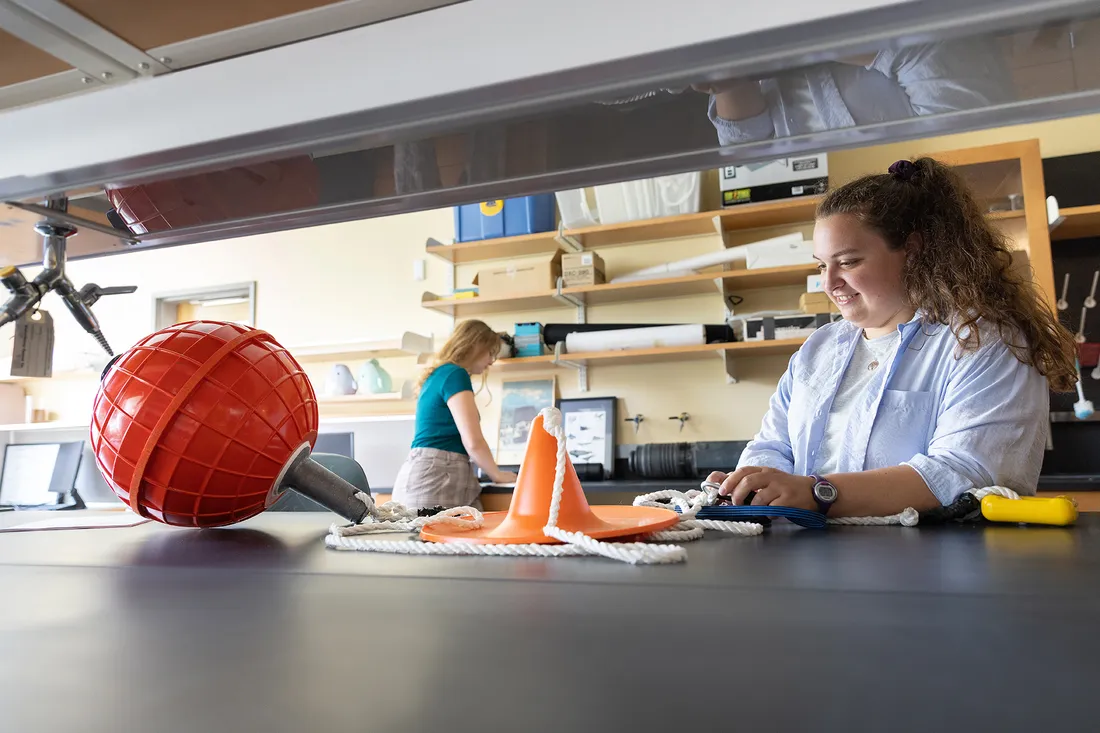
Parks, and the student researchers who focus on marine mammals, gather data through microphones that are either suspended in the water column or temporarily attached to animals by suction.
Research Spaces Encourage Student Exploration and Inquiry
In her lab, Parks supports a wide range of research projects at the intersection of bioacoustics, animal behavior and conservation—including studies on different species of whales and seals, as well as wolves, frogs and forest elephants in the Congo basin. The lab also hosts a colony of crickets, which allows students to research more general questions about acoustic signaling and the potential impacts of noise exposure. “You can ask certain questions about sound within a cricket colony—which has a three-month generation time—that are just not possible to study in species with a 20-year generation time, like whales,” she says.
Parks is a committed mentor. Leanna Matthews G’17, now a biology professor and assistant director of the marine conservation group Sound Science Research Collective, speaks to the impact of her support. “I couldn’t do the work I’m doing now without the foundation in acoustics and marine systems that I learned from Susan,” Matthews says. “She gave me the scientific information and technical skills to be a good scientist.”
Parks also shares her passion for the ocean and ecology through the courses she teaches, such as a popular one that introduces nonscience majors to ocean ecosystems and the impact oceans have on nearly every aspect of life.
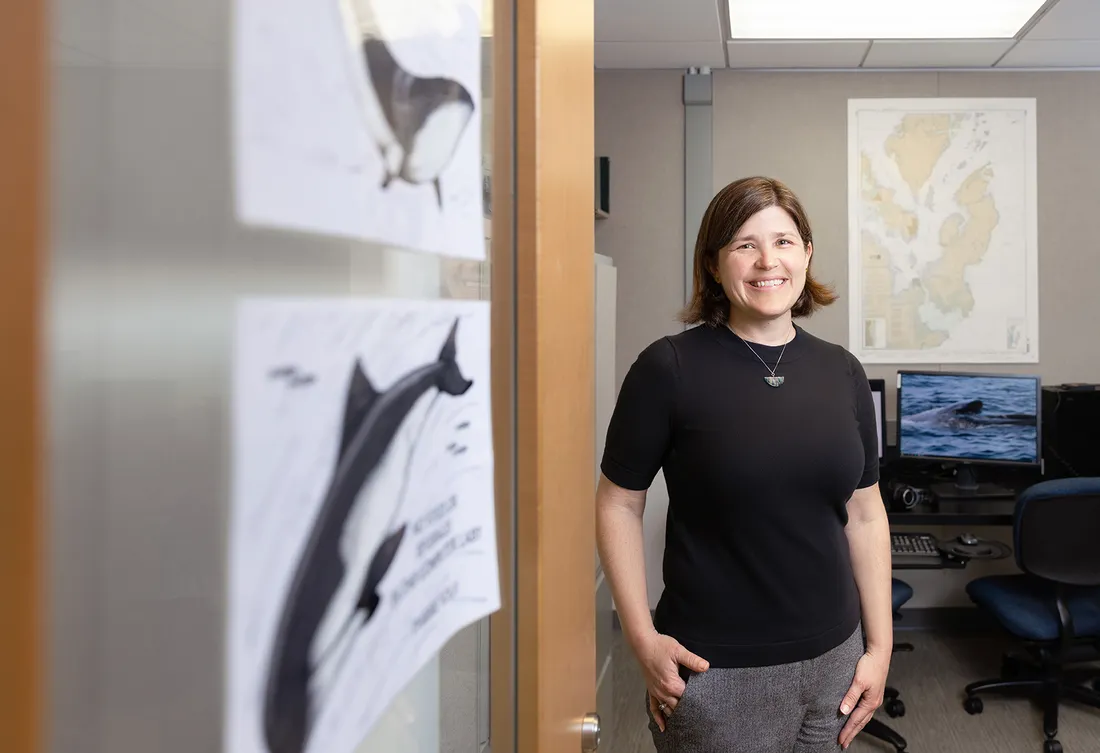
One of the courses Parks teaches introduces students to ocean ecosystems and the impact they have on nearly every aspect of our lives. Understanding the ecology around us can help us chart our way to a future with intact ecosystems and biodiversity, she says.
Awards and Recognition Allow for Further Investigation
Parks has broken the proverbial glass ceiling several times as the first woman in a range of scientific spaces. Her work has also garnered some major awards, such as the Young Investigator Award from the Office of Naval Research and an award from then President Barack Obama, recognizing her promise as an early career scientist.
While grateful for the opportunities and amplification that recognition brings, what truly motivates Parks’ commitment is the continued intrigue of her research. “Everything we learn reveals more complexity, nuance and variability,” she says. “The interplay of changes in the environment affecting behavior and the plasticity of animals’ behavior in response to the environment is what I find most fascinating. We have to acknowledge that anything we observe is just a snapshot in that particular space and time—so there are always more questions to ask.”
Everything we learn reveals more complexity, nuance and variability.
Professor Susan Parks
And these questions are all the more pressing as animals try to adapt to environments changing quickly from human activity and climate change. Understanding the ecology around us can help us chart our way to a future with intact ecosystems and biodiversity, Parks says. “I’m interested in fundamental questions of animal behavior, but I’m also interested in questions that will help improve the world.”

